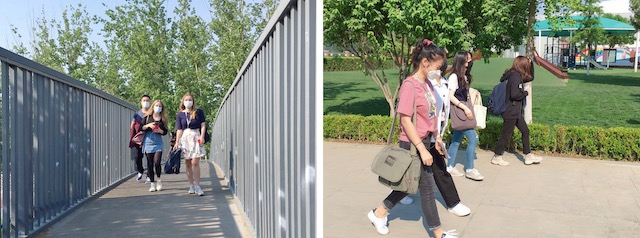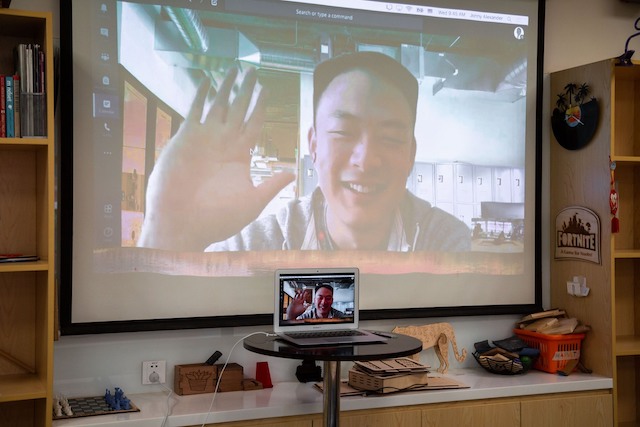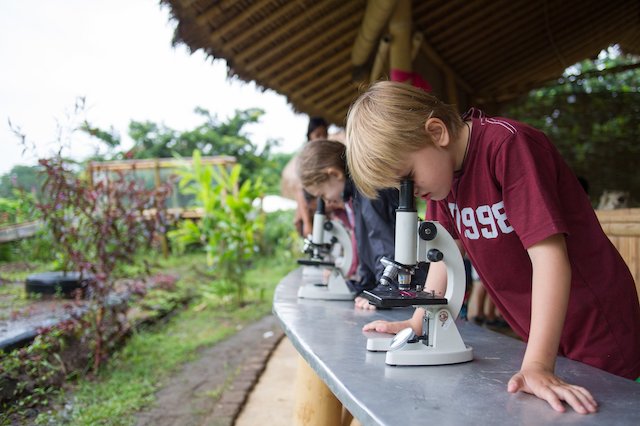According to UNICEF “ Some 1.5 billion students — close to 90% of all primary, secondary and tertiary learners in the world — are no longer able to physically go to school” That’s a considerable hit to business as normal. This global pause has enabled us to reflect and explore the ways the Covid-19 crisis can be used to fuel change and harness the opportunity to revolutionise international education as we know it.
Our adviser, Jo put it aptly when she stated: “I think school communities will take a serious look at the current western education model and reconsider what we teach, how we teach it and where we teach it, and, most importantly, why we teach it. The closures will have given educators and families a chance to reflect on what is important and this might lead to some well-overdue reforms in education.” Forget going ‘back to normal’ —let’s use this opportunity to really evaluate current school systems and structures. This prompts the crucial question: what will a ‘new normal’ in international education look like?
The New Normal: Let’s Build Back Better!

One of our partner schools Dulwich College, Beijing have recently welcomed yr 13 Students back to school. They have been incredible during the crisis, demonstrating a great sense of community and support. Welcome back!
We are hearing it everywhere, this notion of a ‘new normal’. It’s time to start envisaging a future we desire and putting it into action! There are several areas within international education that the Covid-19 crisis has thrown up to the surface: notably issues of access, wellbeing and technology. We can choose to view these, even the shortcomings, as areas of opportunity in shaping international education.
Sometimes all the structures of schooling can mask the heart of the matter in education. This pandemic has stripped away the protocols as we know it and we have seen innovative methods of teaching and learning appear. As Weforum note: “All the red tape that keeps things away is gone” and now we are left with what really matters. We are also left with a very clearer view of what works and doesn’t.
“Build Back Better” is a concept used in disaster recovery, rooted in the notion that disaster can trigger resilience and through policy and action societies can be rebuilt even better than before. The notion fits well in our current Covid landscape. The concept of Build Back Better can help us imagine ways we can do things differently moving forward. There are several possible areas where we can ‘build back better’ in international education, but we are going to focus on technology, access & inequality.
Build Back Better: Harnessing the power of digitalization in international education.

Shanghai Community International School. During the pandemic they utilised ‘blended learning’. Their teachers in Italy, Turkey, Australia, and Canada teach live lessons along with their teachers on-site in Shanghai.
Covid-19 certainly brought technology to the forefront of education. It highlighted the potential of using online learning even in a post-covid world, it accentuated issues in equality when it comes to internet connectivity and it also brought home the power of stepping “offline” and embracing experiential learning.
The importance of digital literacy
We can expect to see online learning continue once schools open. Many schools have already stated that they will utilise online platforms even when face-to-face classes resume. World wide internet use and connectivity is here to stay in education and will continue to grow. If schools are in agreement with WeForum’s latest article that it is “indispensable… for our populations to be digitally literate to function and progress in a world in which social distancing, greater digitalization of services and more digitally-centered communications may increasingly become the norm” then it requires building a rigorous online pedagogy for teachers and the opportunity for learners to have the access to build their literacy skills. In a survey conducted by UNICEF, “most parents said that their children had learned to use new technologies better in order to follow the school curriculum online. One in every two parents believes that the development and presentation of teaching materials on television and the internet should continue even after this crisis.”
Technology to be used to supplement teaching not replace teachers.
While we embrace the use of technology it is no replacement for teachers themselves. As virtual classrooms have highlighted, teachers are the ones putting in the work and communicating with their students, the digital element is just a tool. The World Economic Forum recently wrote an article on educational changes post Covid-19, stating: “quickly realizing that remote learning is just a baby step experiment in the long journey to offering online education that has been conceived as such, which includes effective student engagement tools and teacher training.” This is an exciting aspect of realising the ways digital education can support the delivery of quality programs in international schools. As mentioned in our earlier article on changes to international education, teachers are building in professional development elements to ensure they can implement online learning pedgagogy into their work.
Limitations in access and issues of equality
As well as technology being a main-stay in international schools, it has also really highlighted issues of equality and accessibility. It has become evident that depending on the individual’s situation some people will be better equipped with internet connectivity and/or access to learning materials than others. This is to be addressed by schools and policies that are adopting an increased roll out of digitalization in the future. “We may also see inequality drive different technology uses, with wealthier communities using more demanding technologies (virtual and mixed reality, telepresence) while poorer ones turn to tools with lower infrastructure demands (asynchronous video, audio, images and text).” This divide is to be acknowledged and worked with, ensuring that the method yields similar learning opportunities despite the differences.
Access to technology is only one aspect of inequality in the digital divide, also highlighted within international schools is students who have different needs that may have been neglected in the transition over to purely digital learning. As Education International succinctly expresses: “School closures tend to reinforce inequalities and, although use of digital means in some countries may help during this period, they will often be of less value to disadvantaged, special needs and other students requiring substantial personal attention, thereby increasing the digital divide”
The flip-side of the digital divide: Inclusivity
While it has evidently increased the divide in terms of access, and has meant extra support needed for some individuals, a flip side of this has also been reported. Some students have found the new environment excel’s their learning experience, as recorded in a recent Cambridge International blog post: “Home schooling for some children may have provided an environment that really plays to their strengths. One parent of a child with Autism Spectrum Disorder spoke positively about the gains made learning at home: “My son is less tired by not having to think of all the extras like finding rooms, packing bags, following a timetable, rushing lunch, etc. He is enjoying the way work is set now as the home is quieter and calmer for him.” This demonstrates the opportunity to re-evaluate traditional teaching structures. Some parents noticed how their children worked well when they could move around the room or that using headphones supported their concentration. Inclusivity calls for less traditional ways of educating, perhaps starting with the most simple of approaches like changing the classroom set up.
Build Back Better: A change to well-being for students, teachers and parents

A viral post of cute story where a school in China got creative with social distancing but making social distancing hats. Kudos!
The pandemic has revolutionized a human element to international education. As touched upoin earlier, redtape and school administration can sometimes undermine the real learning at hand. The pandemic has highlighted the “above and beyond” mentality that teachers so commonly demonstrate, it’s put a spotlight on the great stress teachers are so often put under, it has accentuated the role of schools, care-givers and parents in the learner’s journey and has highlighted the importance of unique, individualised and human centred learning. Fitting into rigid structures and becoming a statistic suddenly seems undeniably counter intuitive. So how can we start to utilise some of our individualised focus back into a school system?
Innovation, creativity & community support.

The Green School, Bali already pioneers of experiential learning have their very own innovation hub! We expect to see other schools following suit post pandemic.
The shanker institute recently wrote an article outlining opportunities for schools after Coronavirus: It’s now clear that without their teachers’ care and support it’s hard for many young people to stay well and focused. Being well, we’ll appreciate, isn’t an alternative to being successful. It’s an essential precondition for achievement, especially among our most vulnerable children.” As well as support, innovation, creativity and community support have shown to be key elements in successful learning. Wellbeing has began to look less like classroom yoga class and more like stepping off digital devices, getting outside, creating something and supporting the wider community. Schools and initiatives that have done well during this unprecedented time all have one thing in common—community. Wellbeing is undeniably entangled with having a good sense of community. While an individualised approach to teaching and learning is needed, support and connectedness is paramount to success.
We have heard plenty of stories and seen plenty of pictures of the creative and experiential ways of learning over these months. Many schools were already adopting more experimental learning—heads up The Green school, Bali! We now imagine more to be following suit in pioneering progressive and non-traditional methods, as fundamentals to living sustainably have been highlighted during the pandemic.



